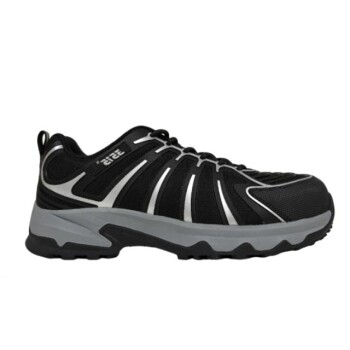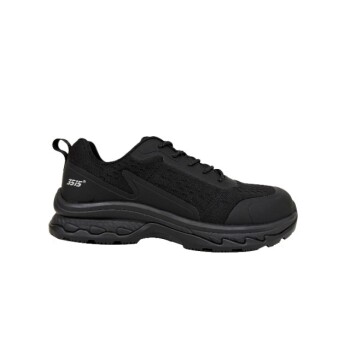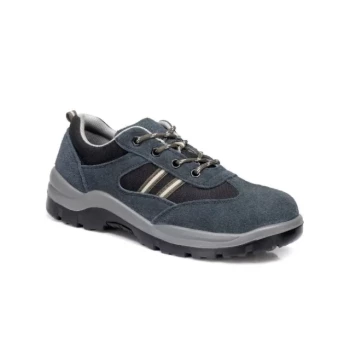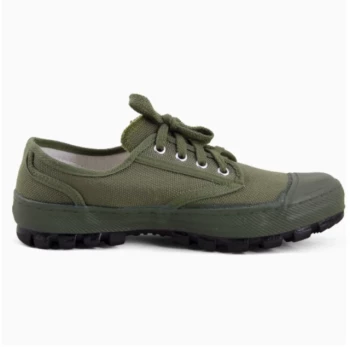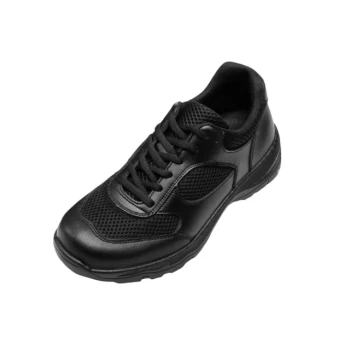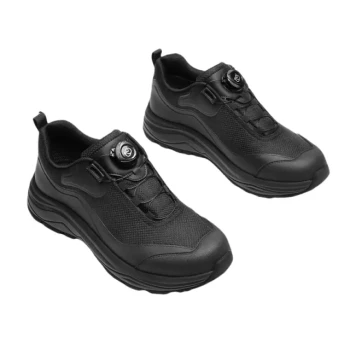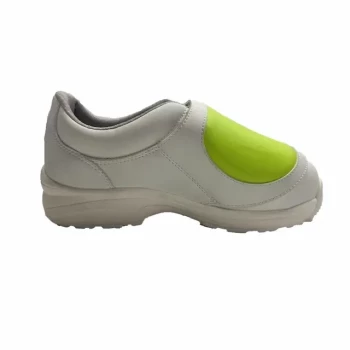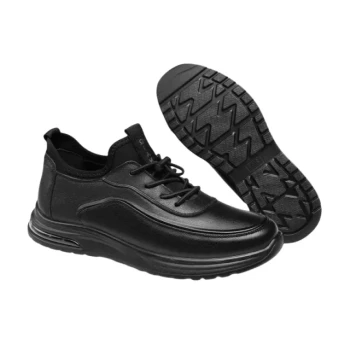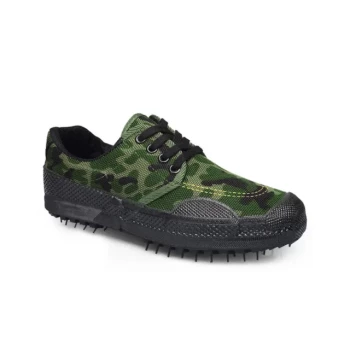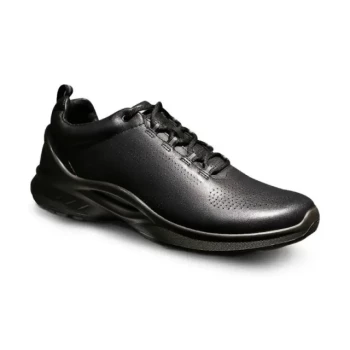At its core, a safety shoe is a piece of personal protective equipment (PPE) for your feet. Unlike a standard durable boot, a true safety shoe is engineered with specific, certified components designed to protect you from workplace hazards. The most defining feature is a reinforced protective toe cap, typically made of steel or composite materials, which guards against impact and compression injuries.
The critical distinction is one of purpose. A regular shoe is designed for comfort and style, while a safety shoe is fundamentally a tool engineered to mitigate specific, identified risks in a hazardous environment.
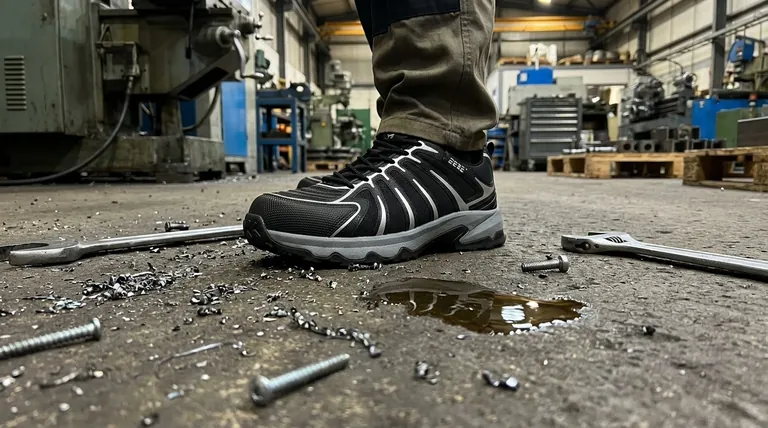
The Anatomy of a Safety Shoe: Key Protective Features
A safety shoe integrates several components that work together to provide comprehensive protection. Understanding these elements is key to selecting the right footwear for the job.
The Defining Feature: Protective Toe Caps
The non-negotiable element of any safety shoe is its protective toe cap. This component is designed to resist crushing forces and impacts from falling objects.
The two primary types are steel toes and composite toes. Steel offers maximum protection in a slim profile, while composites (made of materials like thermoplastics, carbon fiber, or aluminum) are lighter and don't conduct electricity or temperature.
The Foundation: Slip-Resistant Outsoles
Workplace slips and falls are a major cause of injury. Safety shoe outsoles are made from durable rubber or polyurethane compounds with tread patterns specifically designed to channel away liquids.
These soles provide superior slip resistance on surfaces contaminated with water, oil, or chemicals, offering a level of grip that standard footwear cannot match.
The Barrier: Puncture-Resistant Midsoles
For environments where sharp objects like nails, screws, or metal shards are on the ground, a puncture-resistant midsole is crucial.
This is typically a steel or flexible fabric plate positioned within the sole to prevent sharp objects from piercing through the bottom of the shoe and injuring the foot.
The Safeguard: Specialized Properties
Beyond the main components, safety shoes often include protection against other, less obvious hazards.
Features like antistatic properties dissipate static electricity, which is critical in sensitive electronic environments. Electrical Hazard (EH) rated shoes are built to significantly reduce the chance of electrocution from live circuits.
Understanding the Trade-offs: Safety vs. Comfort
It's tempting to want a single shoe that offers maximum protection and the lightweight comfort of an athletic sneaker. However, these two goals are often in direct opposition.
Why Your Running Shoe Isn't a Work Shoe
A high-quality walking or running shoe is engineered for shock absorption, flexibility, and minimal weight. It uses ample midsole foam and a rocker shape to create a comfortable, responsive ride.
These features are fundamentally incompatible with the requirements of a safety shoe. The rigid, dense materials needed for puncture resistance and toe protection add weight and reduce flexibility, sacrificing the "bounce" of an athletic shoe for pure, uncompromised safety.
The Cost of Protection: Weight and Flexibility
Every protective feature involves a trade-off. A steel toe offers immense protection but adds significant weight. A puncture-resistant plate makes the sole far more rigid than that of a standard boot.
This rigidity is necessary for protection, but it means the shoe will not feel as nimble or comfortable as footwear designed purely for walking or casual wear.
The Myth of the "All-in-One" Solution
There is no single "best" safety shoe; there is only the best shoe for a specific work environment and its associated hazards. A shoe with an outsole designed for oily factory floors may not have the best tread for loose gravel on a construction site. The choice of features must be driven by a clear risk assessment.
How to Select the Right Protection
Choosing the correct footwear begins with identifying the primary risks of your environment. Your selection should be a direct response to those specific hazards.
- If your primary risk is falling objects or heavy equipment: Your non-negotiable feature is a certified steel or composite toe cap that meets regulated impact and compression standards.
- If your primary risk is slippery floors: Focus on a shoe with a slip-resistant outsole specifically rated for the substances you encounter, such as oil or water.
- If your primary risk is sharp objects underfoot: You must select a shoe with a built-in puncture-resistant midsole plate.
- If your primary risk is electrical contact: Ensure your footwear has a certified Electrical Hazard (EH) rating appropriate for your work.
Ultimately, selecting the right safety shoe is an exercise in matching the tool to the task.
Summary Table:
| Protective Feature | Primary Purpose | Key Considerations |
|---|---|---|
| Protective Toe Cap | Guards against impact and compression from falling objects. | Choose between steel (maximum protection) or composite (lighter, non-conductive). |
| Slip-Resistant Outsole | Prevents slips and falls on wet or oily surfaces. | Look for specific tread patterns designed to channel liquids. |
| Puncture-Resistant Midsole | Protects the foot from sharp objects piercing the sole. | Typically a steel or flexible fabric plate embedded in the sole. |
| Specialized Properties (EH/ESD) | Reduces risk of electrocution or controls static discharge. | Essential for electrical work or sensitive electronic environments. |
Need the right safety footwear for your workforce?
As a large-scale manufacturer, 3515 produces a comprehensive range of certified safety shoes and boots for distributors, brand owners, and bulk clients. We can help you source the precise footwear that matches your specific workplace hazards, ensuring compliance and worker safety.
Contact our expert team today for a consultation and discover how we can support your business with reliable, high-quality protective footwear.
Visual Guide
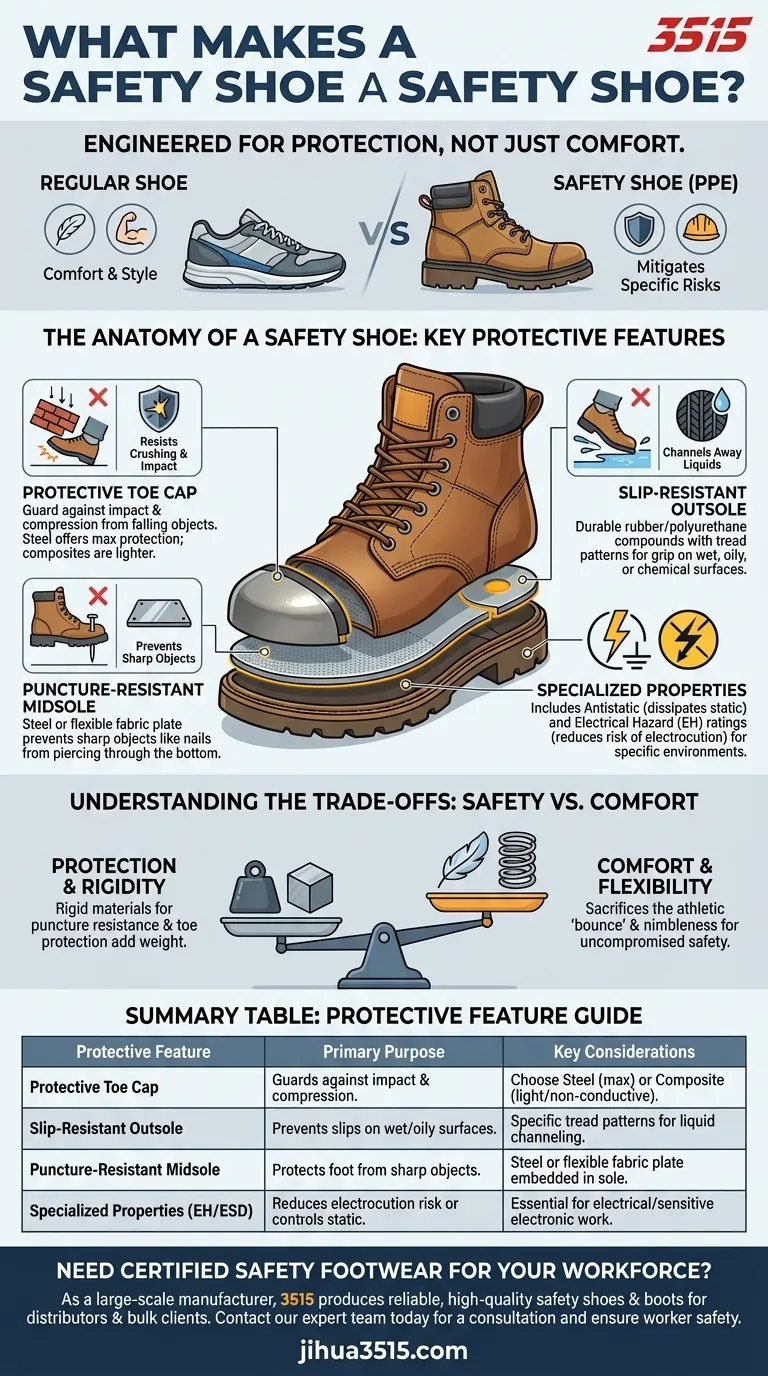
Related Products
- Premium KPU Athletic Safety Shoes for Wholesale
- Wholesale Leather Safety Boots with Customizable Protective Toe
- Premium Lightweight Safety Shoes for Wholesale & Bulk Orders
- Wholesale Durable Breathable Safety Boots Custom OEM Manufacturer
- Custom Safety Shoe Manufacturer for Wholesale & OEM Brands
People Also Ask
- What are the EN ISO 20345 norms for safety shoes? A Guide to Choosing the Right Protection
- What do the markings on ASTM-compliant safety shoes indicate? Decode the Safety Labels for Maximum Protection
- Why is expert help recommended when selecting safety shoes? Ensure Perfect Fit & Hazard Protection
- What types of workplace hazards require protective footwear? Essential Guide for Workplace Safety
- How is puncture resistance evaluated in footwear soles? Balance Protection, Comfort & Safety
